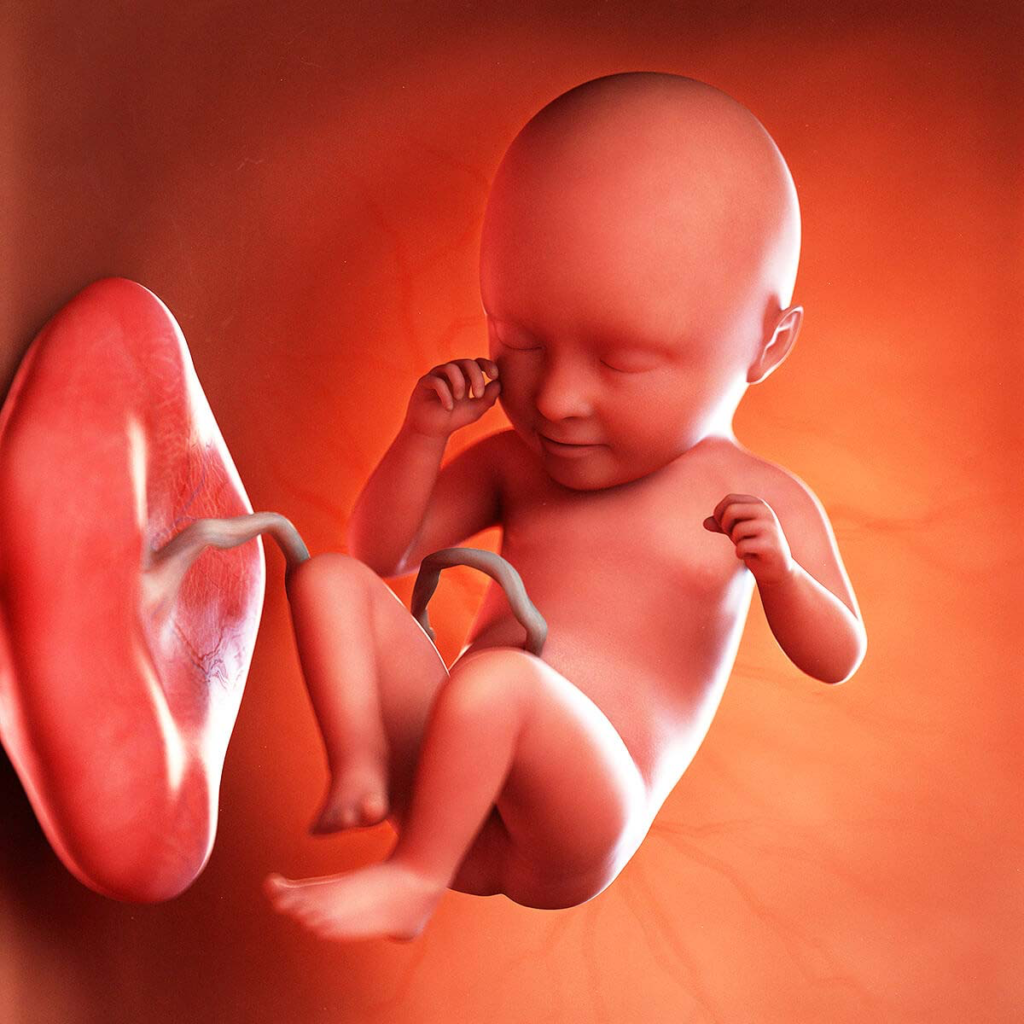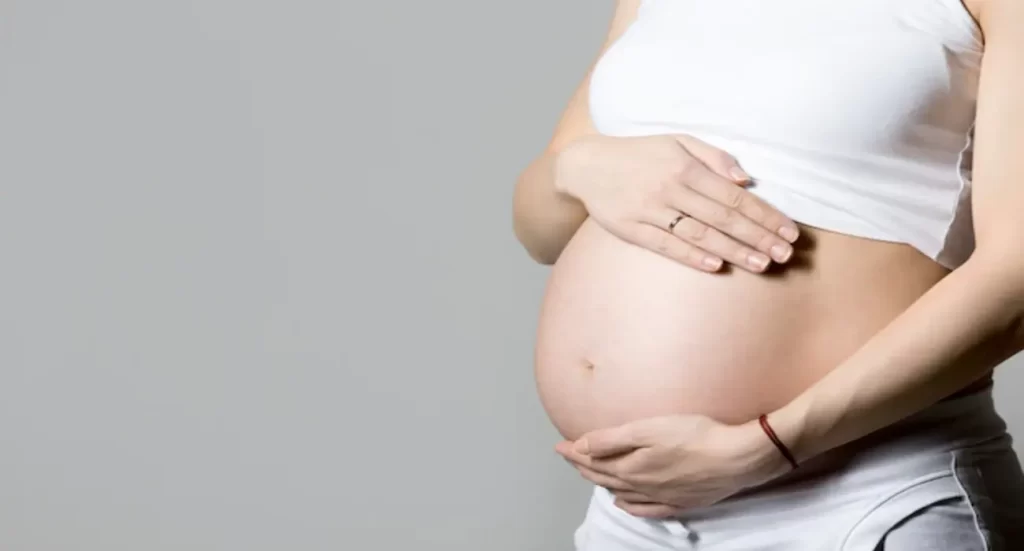Feeling your baby move inside you is the most awaited and exciting part of your pregnancy journey. Fetal movements are a positive indication that the fetus is growing well in size and strength inside the mother’s womb.
In This Article –
- What is fetal movement?
- When will you start to feel your baby move?
- How does baby movement feel at different stages of gestation?
- How often should you feel the baby’s movement?
- Why are you not feeling your baby move?
- How to count a baby’s kicks?
- How important is your baby’s movement for a healthy pregnancy?
- When to raise a concern?
What Is Fetal Movement?
Baby’s movement inside the womb stimulates muscle growth and development, the flexibility of joints, shaping and strengthening of bones, and also helps in the development of the central nervous system.
Starting with subtle flutters and feeble squirms, these fetal movements eventually progress into well-defined, distinct full-blown kicks.
As your pregnancy progresses, you get to familiarise yourself with the pattern of your baby’s movements and pick out any cues of change in your baby’s movements.
When Will You Start To Feel Your Baby Move?
The very first signs of the baby’s movements are normally felt by the mother around 18 to 24 weeks of gestation.
For the first-time mother, it may take around 20 weeks or above to recognize these subtle movements of fluttering called quickening.
Experienced mothers can recognize baby movements as early as 16 weeks.
Don’t panic if you haven’t felt any recognizable movement for 20 weeks. Wait for a few more weeks. Reach out to an obstetrician if you reach 26 weeks without any feeling of baby movement.
How Does Baby Movement Feel At Different Stages Of Gestation?
The type of baby movement you feel varies with the stage of their development. Let’s see how those kicks feel at different weeks in your pregnancy journey.

Fetus at 9 weeks
- At 9 weeks – It is unlikely for the mother to feel any fetal movements as early as nine weeks. But, your baby’s limbs are moving together as a single unit, and are visible in ultrasound scans.
- At 13 weeks – The baby is moving his arms and legs separately, kicking and responding to skin touch. Even now, your baby is too tiny and deeply cushioned inside the comfort of your womb, making it difficult for you to recognize any of those movements.
- At 16 to 20 weeks – During these weeks, you may be able to feel a fluttering, swishing, rolling, tumbling sensation or a tiny kick. This is quickening. Usually, women have registered this early sensation as “Butterflies fluttering in the tummy”, “Goldfish swimming”, “popcorn popping’ and ‘ hunger pangs”.
- At 25 to 32 weeks – The gentle kicks, fluttering, and slow squirming movements change into more distinct, sporadic, stronger, sharper kicks. By this time, there is plenty of space for your baby to move around as your womb is filled with an ample amount of amniotic fluid. These movements are definitive and form a pattern or rhythm.

Fetus at 32 weeks
At 32–35 weeks – The movements are maximum around 32 weeks, then get slower but more powerful. As the baby grows, he takes up space in the uterus and his movements are restricted due to confined space.
At 36 weeks and above – By this time, you may feel more rolls and stretches than kicks and punches. This character change in movement is because of limited space availability in the uterus. The baby shows a bicycling movement of both feet called stepping, as he is getting ready for labor.
How Often Should You Feel The Baby’s Movement?

An active baby is a healthy baby
Remember, an active baby is a healthy baby. Movements in your baby are similar to exercising to promote healthy bone and joint development. There is no fixed rule or formula to define a baby’s movements and conclude it as “normal”. Just as every pregnancy is unique, every baby has an activity routine of his own. However, as the pregnancy progresses, you will be able to get an understanding of your baby’s routine. When this pattern is set, any slight change in the baby’s activity can be easily picked up by the mother.
Why Are You Not Feeling Your Baby Move?
Your scan reports indicate right fetal activity, But still, you are not able to feel it yourself. That’s normal in certain circumstances.
- Usually, first-time mothers begin to recognize quickening only after 20 weeks and above. That’s because of a lack of experience in pinpointing those faint, subtle fluttering sensations or because of the tight abdominal muscles.
- Certain drugs, smoking, and alcohol sedate the mother and fetus, thus making the movements not easily realizable by the mother.
- Low amniotic fluid during the early stages of gestation is another reason that prevents the mother from feeling fetal movement
- The anterior placenta, where the placenta lies in the front wall of the womb, may act as a cushion-like barrier and absorb the impact of the baby’s movement.
How To Count A Baby’s Kicks?

Talk to your baby, sing, and keep it as a bonding time with your baby.
Kick counts are a valuable tool for monitoring a baby’s health. It is normally done every day at the same time, after 28 weeks of gestation, preferably.
Choose a time when you are least distracted. Get into a comfortable resting position. Either lie down on your left side or sit stretched with your legs popped up.
Slowly relax your breath and concentrate on your baby. Keep your hands over your belly. Count your baby’s activity. It could be stronger pushing, kicking, or shallow squirming or any slightest movement the baby makes needs to be noted. As a thumb rule, note how many movements the baby makes in an hour. An average of ten movements per hour can be taken as a counting benchmark.
If you are not able to feel at least ten movements around an hour or so, then try having a quick snack, sipping some water, lying on your side, and trying to count the baby’s activity again.
Remember, kick-counting shouldn’t make you stressed. When you are familiar with the pattern of a baby’s movement, counting kicks could be a fun activity to do every day. Talk to your baby, sing, and keep it as a bonding time with your baby.
How Important Is Your Baby’s Movement For A Healthy Pregnancy?
Baby’s movements are also a way in which your baby communicates with the world outside. Generally around 20 weeks, most fetuses have a biologically timed rhythmic activity. Regular movements are an indication of a baby’s well-being. But, if there is a sudden change in pattern, it’s an early sign of distress.
- The baby’s movement gives clues about the baby’s position from where the kicks are felt. Head down, babies kick stronger on one side and towards the top of the bump. Breech babies with feet below will kick at the bottom of your bump.
- Some factors for decreased fetal movements are intrauterine growth retardation (IUGR), Fetal growth restriction (FGR), and Small for gestational age (SGA) babies. These conditions need more detailed medical interpretation.
When To Raise A Concern?
A change in your baby’s usual movement can indicate an underlying concern, especially in the third trimester. When you have doubts about kick counts and realize your baby is more inactive, not responding to any stimuli, immediate medical intervention is appropriate.
Remember, there is no other advanced scientific screening technique than a mother’s instincts. It is honest and strong, and never ignores it. If you perceive any significant change in your baby or if simply your gut instincts say so, just follow it- Get medical care immediately.
References
https://www.babycenter.com/pregnancy/your-baby/fetal-movement-feeling-your-baby-kick_2872
https://bmcpregnancychildbirth.biomedcentral.com/articles/10.1186/s12884-016-0922-z
https://www.freepik.com
